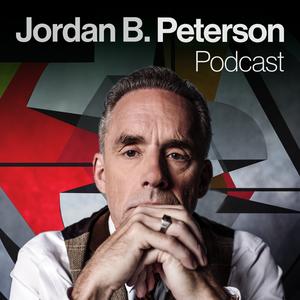Intro
In this episode of the TED Radio Hour, the focus is on the revolutionary gene-editing technology known as CRISPR and its potential to reshape evolution. From curing genetic diseases to saving endangered species, CRISPR has opened up new possibilities for manipulating the building blocks of life. However, with great power comes great responsibility, and ethical considerations must be taken into account. Join host Guy Raz as he explores the exciting and controversial world of CRISPR.
Main Takeaways
Unlocking the Power of CRISPR
- CRISPR is a naturally occurring phenomenon in bacteria that helps protect them from viral infection.
- Jennifer Doudna and Emmanuel Charpentier discovered the CRISPR-Cas9 molecule that can be used for detecting and cutting RNA and DNA molecules.
- This discovery led to the breakthrough of using CRISPR-Cas9 as a genome editing tool.
- CRISPR-Cas9 allows scientists to precisely and programmatically alter specific genes in the DNA, like cutting and pasting information in a book.
- The discovery of CRISPR-Cas9 was a huge breakthrough in gene editing technology, and it was an emotional moment for Jennifer Doudna when she realized its potential.
CRISPR and the Future of Medicine
- Scientists are using CRISPR in clinical trials for various diseases.
- CRISPR offers a cure for genetic diseases, paving the way for future applications of the technology.
- CRISPR technology is changing evolution by going back to the instruction manual that makes us who we are and making changes there.
- However, there are ethical considerations regarding access, who decides, who pays, and who has access to the technology.
- CRISPR technology can be used to engineer humans with enhanced properties such as stronger bones or less susceptibility to cardiovascular disease, raising ethical questions.
Personalized Medicine and Stem Cells
- Recent medical advances may allow us to defeat some of today’s most debilitating illnesses.
- Stem cells have the code to become any cell type in the body and can be generated for each patient using induced pluripotent stem cells.
- Stem cells offer the possibility of generating any cell type on demand, but engineering them is difficult and requires figuring out how to manufacture them in a fully automated and cost-effective way.
- Stem cell technology can create miniature human replicas of individuals with their cells on a chip, allowing for drug testing before administration.
- Stem cell treatments could potentially cure diseases like Parkinson’s and diabetes, making them less burdensome and life-altering.
Reviving Endangered Species and Protecting Nature
- Revive and Restore is a non-profit using biotechnology to enhance biodiversity by rescuing species from extinction.
- Cloning offers a solution to the problem of limited genetic diversity in endangered species.
- Elizabeth Ann, the world’s first successfully cloned black-footed ferret, has ten times more genetic variation than any living ferret today, making her a milestone for conservation.
- Coral reefs can be preserved through new technologies like crowd-preservation and stem cell research.
- Intervening in nature should be done with caution, considering the potential risks and unintended consequences.
Summary
Unlocking the Power of CRISPR
CRISPR-Cas9 is a revolutionary gene-editing tool that allows scientists to precisely alter specific genes in DNA. This technology was discovered by Jennifer Doudna and Emmanuel Charpentier and has opened up new possibilities for treating genetic diseases and reshaping evolution. The discovery of CRISPR-Cas9 was a major breakthrough in gene editing, and its potential has both scientific and emotional significance.
CRISPR and the Future of Medicine
CRISPR technology is being used in clinical trials for various diseases, offering the potential for cures and personalized medicine based on DNA sequencing. However, ethical considerations arise regarding access, decision-making, and the engineering of enhanced human traits. The international scientific community has called for caution in the application of CRISPR technology in human embryos, but not all have adhered to the moratorium, leading to examples of unethical behavior.
Personalized Medicine and Stem Cells
Recent medical advances, combined with stem cell technology, offer hope for curing diseases like Parkinson’s and diabetes. Stem cells have the ability to become any cell type in the body, but their engineering and manufacturing present challenges. The potential for personalized medicine and drug testing on miniature human replicas using stem cells is an exciting prospect for the future of healthcare.
Reviving Endangered Species and Protecting Nature
Biotechnology, including cloning, is being used to rescue endangered species and enhance biodiversity. The successful cloning of Elizabeth Ann, a black-footed ferret, highlights the potential of cloning to increase genetic diversity and save species from extinction. Additionally, new technologies like crowd-preservation and stem cell research offer hope for preserving coral reefs and addressing environmental challenges. However, the intervention in nature should be approached with caution to minimize risks and unintended consequences.
Conclusion
CRISPR technology has the power to reshape evolution and revolutionize medicine. From curing genetic diseases to saving endangered species, the possibilities are both exciting and ethically complex. As we navigate this new era of biology, it is crucial to strike a balance between innovation and responsible use of these powerful tools. By considering the potential risks and benefits, we can harness the potential of CRISPR for the betterment of humanity and the preservation of our natural world.
